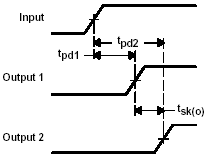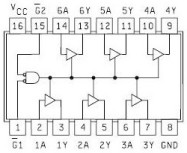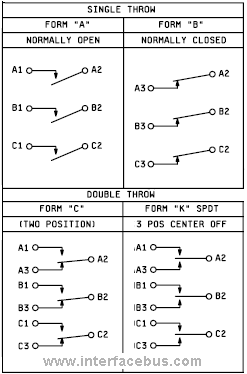Dictionary of Electrical and Electronic Terms
"A"
"B"
"C",
"D",
"E",
"F",
"G",
"H",
"I",
"J",
"K",
"L",
"M",
"N",
"O",
"P",
"Q",
"R",
"S",
"T",
"U",
"V",
"W",
"X",
"Y",
"Z"
"S" to "Sec",
"Sel" to "Series pa", "Series pe" to "Shr",
"Shu" to "Sil", "Sim" to "Skip",
"Sky" to "Spe",
"Spi" to "Sta",
"Ste" to "Su", "Sw",
"Sx" to "Sz"
Simplex Circuit. A circuit that provides transmission in one direction only, or in either direction but only one direction at a time.
Simplex Signaling. [SX] Signaling in which two conductors are used for a single channel, and a center-tapped
coil, or its equivalent, is used to split the signaling current equally between the two conductors.
Simultaneous Switching. The condition when more than one output of an IC are switching at the same time. Also called Ground Bounce.
Sine Wave. The curve traced by the projection on a uniform time scale of the end of a rotating arm,
or vector. Also known as a sinusoidal wave. The basic synchronous alternating waveform for all
complex waveforms.
Single-Ended. An input or output circuit that only uses one line for the signal while the return line is connected to ground.
Single-Ended Amplifier. An amplifier which has a single input, with respect to ground.
Single-Ended Mixer. See Unbalanced Crystal Mixer. Manufacturers of RF Mixers.
Single-Ended Synchronization. Synchronization between two locations, in which phase error signals
used to control the clock at one location are derived by comparing the phase of the incoming signals to the
phase of the internal clock at that location.
Single Inline Memory Module. [SIMM]. A older style of memory stick used in computers in which the copper fingers of each side of the board were connected together. See more Memory Module Abbreviations and their definitions.
Single Inline Package. [SIP] A component package with a single row of pins or terminals. More detail on SIP Components.
Single Line Diagram. A diagram which shows, by means of single lines and graphic symbols, the
course of an electric circuit or system of circuits and the component devices or parts used therein.
Single-Mode Optical Fiber. An optical fiber in which only the lowest order bound mode can propagate at the wavelength of interest.
Single Phase. Relating to a system that uses only one AC power source, or multiple AC sources which are all in phase.
Single Pole. A switch or relay contact arrangement which uses a common contact between the arrangements; regardless of the number of contacts, current most flow through a single contact.
Single-Pole Double-Through. [SPDT] A contact arrangement which connects one terminal to either of two other terminals. Called a form C when used with a relay. [Switch OEMs]
Single-Pole Single-Through. [SPST] A contact arrangement which connects one terminal to one other terminal. Called a form C when used with a relay.
Single Shot Multivibrator. Another name for a One Shot.
Single Sideband. The transmission of information using only one of the two sidebands in an amplitude modulation system. Single sideband may use either the lower sideband (LSB) or the upper sideband (USB). The technique is used to reduce the power requirements of transmission.
Single Stage Amplifier. A circuit with only one active amplifier stage.
Sink Current. An integrated circuit sinks current when current is flowing from a load [another device] into the circuits output. This is considered negative current to the IC. FanOut is a related term.
Sinusoidal. See Sine wave.
Skew. The time delay between two related signals. Switching skew may be either Output-to-Output Skew [switching delay between two outputs on the same IC] or pulse Skew [the delay between the rising edge or falling edge transition of the same output line]. |
 |
In parallel transmission, the difference in arrival time of bits transmitted at the same time. Skew is the time between the earliest and the latest output transition among all outputs. Related terms; Timing Skew.
Skin Effect. The tendency for alternating current to concentrate in the surface layer of a conductor, thereby restricting the current to a small part of the total cross-sectional area and increasing the resistance to the flow of current. The effect increases with frequency and serves to increase the effective resistance of the conductor.
Skip Distance. The distance from a transmitter to the point where the sky wave is first returned to earth. Refer to Antenna definitions [in a separate dictionary] for a graphic.
Skip Zone. A zone of silence between the point where the ground wave becomes too weak for reception
and the sky wave is first returned to earth.











